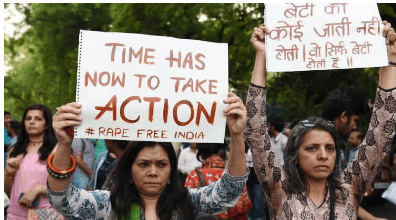NCERT Solutions for Class 7 Social Science - Women Change the World
Q1: How do you think stereotypes, about what women can or cannot do, affect women’s right to equality?
Ans: Rigorous social conditioning has enforced the stereotype that women are considered inferior to men. It is a prevalent belief that women do not have the technical skill and bent of mind needed to be engineers and scientists and that they are only fit for professions like teaching and nursing. This stereotype about which profession they can or cannot pursue hinders the fight for women’s equality. It is also a reason why they are paid less than their male counterparts.
Q2: List one reason why learning the alphabet was so important to women like Rashsundari Devi, Ramabai and Rokeya.
Ans:
 Fig: Learning was important
Fig: Learning was important
Learning the alphabet was important to women like Rashundari Devi, Ramabai and Rokeya because women were forbidden education as it was considered dangerous for their moral development and family life. By learning how to read and write, these women achieved a degree of independence.
Q3: “Poor girls drop out of school because they are not interested in getting an education.” Re-read the last paragraph on page 62 and explain why this statement is not true.
Ans: This statement is not true. On reading the information we realize that girls from poor families drop out of school because their parents are unwilling to send them to school because of lack of money for transportation and education costs.
Q4: Can you describe two methods of struggle that the women’s movement used to raise issues? If you had to organise a struggle against stereotypes, about what women can or cannot do, what method would you employ from the ones that you have read about? Why would you choose this particular method?
Ans:
 Fig: Women raising voice and protesting
Fig: Women raising voice and protesting
Two methods of struggle that the women’s movement used to raise issues are by raising awareness and protesting. Women’s movements raise awareness on women’s rights issues. They spread their message through street plays, songs and public meeting. Women’s movements protest when violations against women happen or when a law or policy works against their interest.
|
63 videos|371 docs|46 tests
|
FAQs on NCERT Solutions for Class 7 Social Science - Women Change the World
| 1. Who are some of the women who have changed the world? |  |
| 2. What are some of the challenges faced by women in changing the world? |  |
| 3. How can women change the world? |  |
| 4. Why is it important for women to be involved in creating change? |  |
| 5. What can individuals do to support women in changing the world? |  |






















